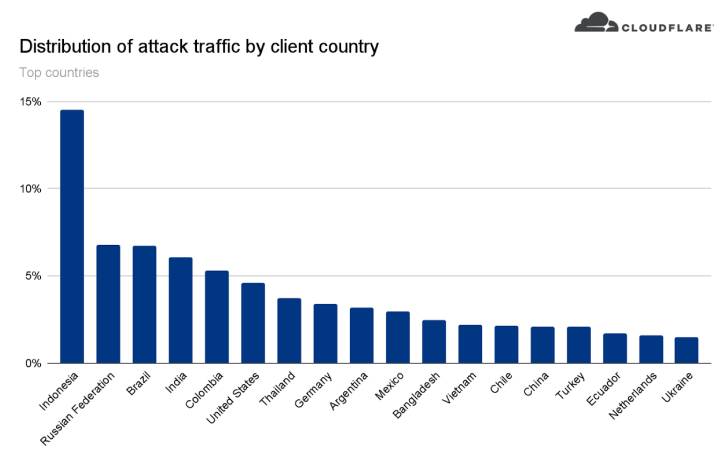Products You May Like
Cloudflare on Wednesday disclosed that it acted to mitigate a 15.3 million request-per-second (RPS) distributed denial-of-service (DDoS) attack. The web infrastructure and website security company called it one of the “largest HTTPS DDoS attacks on record.”
“HTTPS DDoS attacks are more expensive in terms of required computational resources because of the higher cost of establishing a secure TLS encrypted connection,” Cloudflare’s Omer Yoachimik and Julien Desgats said. “Therefore it costs the attacker more to launch the attack, and for the victim to mitigate it.”
The volumetric DDoS attack is said to have lasted less than 15 seconds and targeted an unnamed Cloudflare customer operating a crypto launchpad.
Volumetric DDoS attacks are designed to overwhelm a target network/service with significantly high volumes of malicious traffic, which typically originate from a botnet under a threat actor’s control.
Cloudflare said the latest attack was launched from a botnet consisting of roughly 6,000 unique compromised devices, with 15% of the attack traffic emanating from Indonesia, followed by Russia, Brazil, India, Colombia, and the U.S.
“What’s interesting is that the attack mostly came from data centers,” Yoachimik and Desgats noted. “We’re seeing a big move from residential network Internet Service Providers (ISPs) to cloud compute ISPs.”
Record-setting DDoS attacks have become increasingly common in recent months. In August 2021, Cloudflare disclosed what it characterized as the largest application-layer attack ever seen, and, earlier this year, Microsoft revealed that it had prevented multiple DDoS attacks that crossed 2.4 terabits per second (Tbps).
In addition, cybersecurity firm Kaspersky revealed this week that the number of DDoS attacks hit an all-time high in the first quarter of 2022, jumping 4.5 times year-over-year, largely driven by Russia’s invasion of Ukraine.
“The DDoS attack landscape in Q1 was strongly influenced by the geopolitical situation: since the end of February, we have seen a surge in hacktivist activity and the emergence of a large number of spontaneous botnets that users connected to voluntarily,” the Russian company said.



